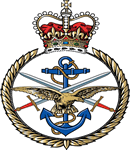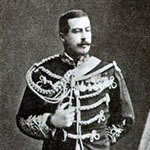Commemorated: | |||
| 1. Book: | Beyond The Five Points | Pgs 48-50 | |
Awards & Titles: | Victoria Cross Companion of The Most Distinguished Order of St. Michael & St. George Mentioned in Despatches India Mutiny Medal with Central India Clasp The Ashantee Medal with Coomassie Clasp Afghanistan Medal with Ali Musjid Clasp India General Service Medal (1854) with Bhootan Clasp | ||
Education & Career :
Educated at Victoria College, Jersey.
Service Life:
Campaigns:
- The Indian Rebellion 1857, India.
- The Third Anglo-Ashanti War 1873-1874, West Africa.
- The Afghan War 1878-1879, Afghanistan.
| Unit / Ship / Est.: 14th (Bengal) Lancers |
| Action : War Survivor |
Although many perished in times of national conflict and in the service of their country, many more survived including those interned as Prisoners of War. Stories of those who did survive are included as part of this site, especially those with high gallantry awards, those included against an external rolls of honour and those who had a distinguished career in wartime and military leaderhip.
Detail :
The sale of his medals (£8000-2019) at Duke's Auctions gives a biography:
"Major General Sartorius was the son of Admiral Sir George Rose Sartorius, GCB. He was born in Portugal on 8th May 1841 and educated at Victoria College. Along with his two brothers, Sartorius chose not to follow in his father's footsteps. Instead, he joined the Army aged sixteen on 29th January 1858. Even before the award of the Victoria Cross, his career was marked with bravery. During the Indian Mutiny, he served with the 72nd Bengal Native Infantry and was nearly killed when a shot passed through his cap, being wounded in the foot at the same time. This during the Relief of Azimghur when he offered to carry important despatches through the advancing enemy. For his service in the conflict, Sartorius was awarded the Indian Mutiny Medal with bar Central India. He had been promoted to Lieutenant in May 1859. Lieutenant Sartorius took part in the Bhutan Expedition and was awarded the Indian General Service Medal with bar Bhootan. He served with the 5th Bengal Cavalry. It was during the Third Ashanti War that Sartorius serving as a Major in the 6th Bengal Cavalry would win the Victoria Cross. During the conflict, he was with a detached column commanded by Captain Glover of the Royal Navy. Along with twenty-five of his men and with Forty rounds per man he was sent ahead to join up with Field Marshal Garnet Joseph Wolseley, 1st Viscount Wolseley at Kumasi. On the 17th January 1874 during fierce fighting at the attack on Abougu, Sartorius noticed a severely wounded Houssa NCO and succeeded in rescuing him for which he nominated for the VC. ' For having during the attack on Abogoo, on the 17th January last, removed from under a heavy fire Serjeant-Major Braimah Doctor, a Houssa Non-Commissioned Officer, who was mortally wounded, and placed him undercover.' Sadly the Houssa NCO did not survive. The award was announced in the London Gazette on 26th October 1874; he had also been Mentioned in Despatches twice during the conflict. Sartorius was invested with his Victoria Cross by Queen Victoria on 30th March 1875. He was awarded the Ashanti Medal with bar Coomassie for his service in the conflict. Throughout the war, he was accompanied by his dog 'Bell'. Both became national heroes, and Sartorius was presented with a Gilt Metal collar for 'Bell' by the 'Ladies of Lancashire. Sartorius served in the Second Afghanistan War as a Lieutenant Colonel and was awarded the Afghanistan Medal with bar Ali Masjid. He was promoted to Colonel in 1886, and Major-General in 1895. Finally retiring in 1897 after nearly forty years' service. Sartorius was also appointed Companion of the Most Distinguished Order of St Michael and St George. Major General Sartorius passed away on the Isle of Wight on 8th August 1908. He was laid to rest in St Mary's Churchyard, South Baddesley."
See also: VC Online.
His citation read:
"For having during the attack on Abogoo, on the 17th January last, removed from under a heavy fire Serjeant-Major Braimah Doctor, a Housa Non-Commissioned Officer, who was mortally wounded, and placed him under cover.
Masonic :
| Type | Lodge Name and No. | Province/District : |
|---|---|---|
| Mother : | Hope No. 413 E.C. | Bengal |
| Joined : | Himalayan Brotherhood No. 459 E.C. | London |
| Joined : | Lodge Light in the Himilayas No. 1448 E.C. | Pakistan |
| Joined : | Mayo No. 1413 E.C. | Punjab |
| Joined : | St John the Evangelist No. 1483 E.C. | Pakistan |
Initiated | Passed | Raised |
30th January 1867 | 8th May 1867 | 12th June 1867 |
It is fair to say that Reginald was an instrument of colonialism having served most of life in India and abroad. Wherever he goes, though, Freemasonry is shown to be an enduring parallel and his movements are close to his military career.
He is first listed as a Lieutenant of the 14th Bengal Lancers when initiated into Hope Lodge at Meerut, Bengal in 1867. He joined Himalayan Lodge of Brotherhood No. 459 4th October, 1875 and also the Lodge Light in the Himalayas. He went on to join Mayo Lodge as a Lieutenant-Colonel of the Bengal Lancers on the 4th November, 1879 and by 1886 when he joined the Lodge of St. John the Evangelist No. 1483, he was listed as Colonel.
Source :
The project globally acknowledges the following as sources of information for research across the whole database:
- The Commonwealth War Graves Commission
- The (UK) National Archives
- Ancestry.co.uk - Genealogy, Family Trees & Family History online
- ugle.org.uk - The records of the United Grand Lodge of England including the Library and Museum of Freemasonry
Additional Source:
- Founder Researchers : Paul Masters & Mike McCarthy
- Researcher : Bruce Littley

